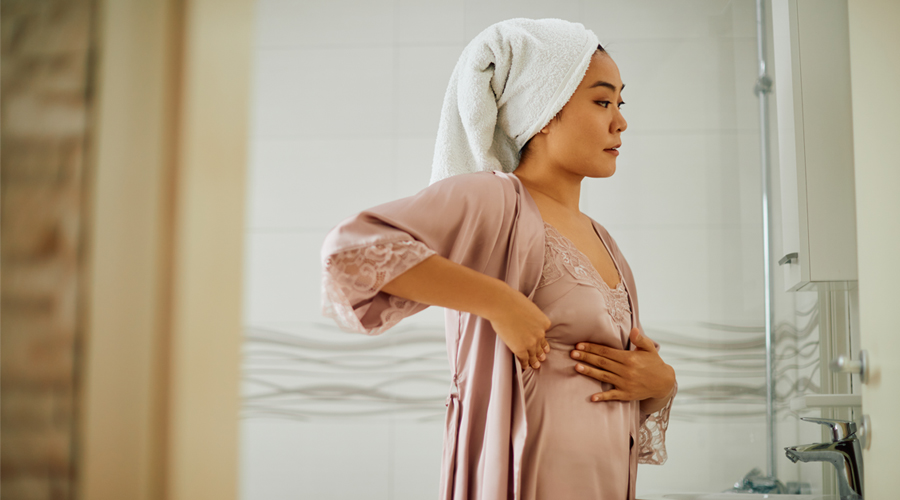Few moments are as anxiety-provoking as finding a lump in your breast. Breast cancer is common, and new growths need to be taken seriously.
That said—try not to panic. Most breast lumps are benign, meaning they are not cancer.
“Get evaluated as quickly as you can, but it’s not an emergency if you find a lump,” says David Eddleman, MD, medical director of breast surgery at UNC Rex Breast Care Specialists. “See your doctor so they can order imaging, but benign conditions are common.”
If you find a lump in your breast, here’s what to do.
1. Take a deep breath and remind yourself of the facts.
If you find a lump, you are not alone. Many women do at some point in their life.
Consider the following factors:
- Age: New breast lumps in women who have not gone through menopause are commonly, but not always, benign. These include fluid-filled cysts, solid masses called fibroadenomas and fibrocystic breast changes affected by hormones. New lumps in women who have gone through menopause tend to be more concerning.
- Pain: Although cancer can be painful, more often it is painless. If your breasts are painful or if you have a tender lump, it’s likely related to cysts or hormones.
- Nipple discharge: Most nipple discharge is noncancerous, but new, bloody or spontaneous nipple discharge (meaning it drains out without squeezing) can be a warning sign of cancer.
- Skin or nipple changes: Changes in your nipple or breast skin such as nipple retraction, dimpling, swelling or puckering—the skin looks like an orange peel—can signal cancer.
2. Call your doctor to get the lump checked out.
Breast cancer can happen to anyone, young or old, and not all women experience the same symptoms. That’s why it’s important to get new lumps checked out by your primary care doctor or OB-GYN, even if all signs point to a benign condition.
Your doctor will perform a clinical breast exam so they can feel the lump and evaluate your symptoms. They may recommend a mammogram or ultrasound, which will reveal whether the lump is solid or fluid-filled, and if the lump has benign or malignant characteristics.
“A cancerous lump may feel identical to a noncancerous lump, but you can tell the difference with imaging,” Dr. Eddleman says.
Your doctor may order a biopsy or refer you to a breast specialist for a definitive diagnosis.
3. Continue (or begin) regular breast self-exams.
Despite debates about their effectiveness, Dr. Eddleman suggests women conduct a breast self-exam every one to two months. Here’s how to do it:
- Attempt to flatten the breast tissue as much as possible with your arm up over your head.
- Make sure you feel all the breast tissue, including under the arm.
- Take note of anything that feels different, including breast lumps and pain.
- Report changes to your doctor.
There’s value in doing regular self-exams because you get to know your breasts, their irregularities and how they feel, Dr. Eddleman says. “When you feel something different, you’ll know it.”
He recommends bringing any changes that last throughout an entire menstrual cycle to your doctor’s attention.
4. Get regular mammograms starting at age 40.
Mammograms save lives because they find breast cancer early, before it spreads to other parts of the body. This allows for early treatment and a good prognosis.
“That’s when you want it diagnosed, when you can see it on a mammogram and you can’t feel it, because that means it’s usually small,” Dr. Eddleman says. “The smaller it is, the more treatable and more successful the treatment is.”
Dr. Eddleman and other experts suggest women begin annual mammograms at age 40. Women at higher risk because of factors such as family history may want to begin screening even earlier; talk to your doctor about your personal risk.
Talk to your doctor about your risk for breast cancer. If you need a doctor, find one near you.
